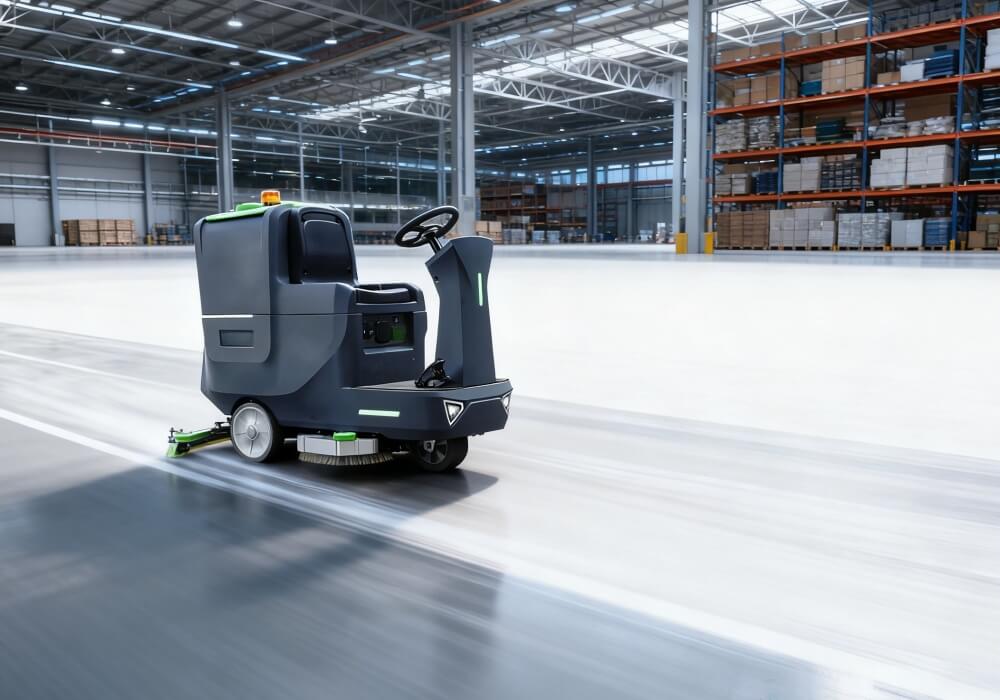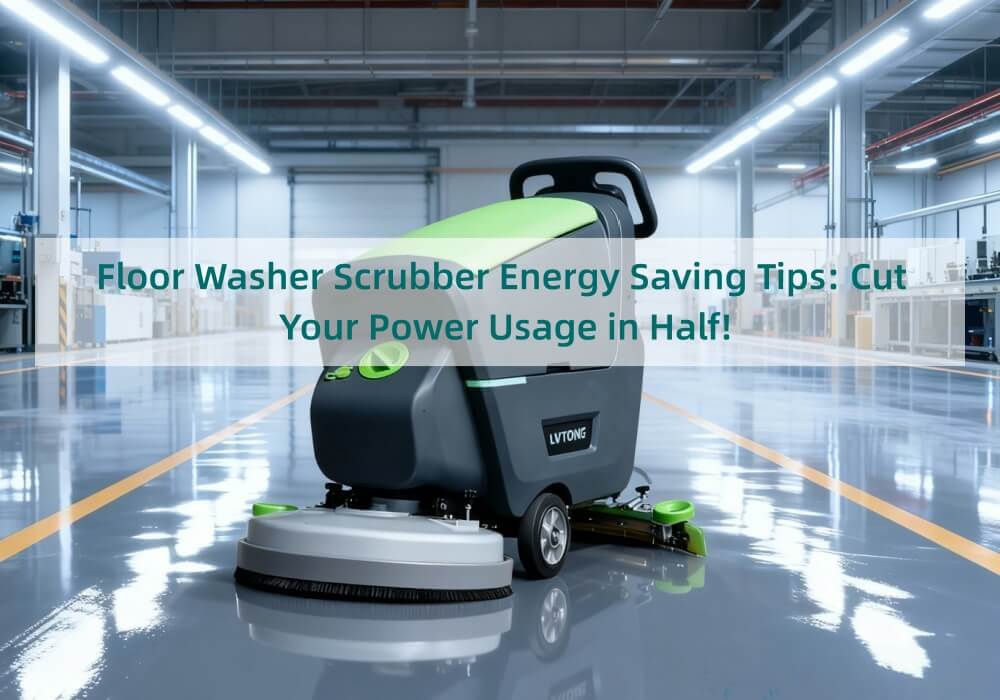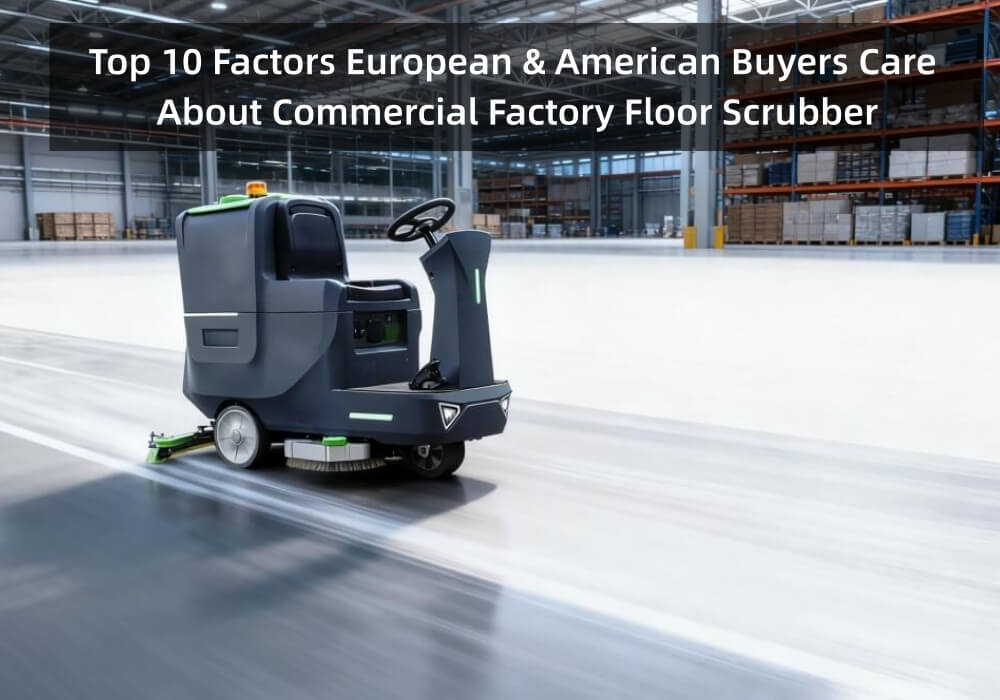A ride-on floor scrubber is a commercial cleaning machine designed for large-scale facilities, offering significant productivity improvements through efficient cleaning, scrubbing, and drying in a single pass. When evaluating ride-on floor scrubbers for sale, decision-makers must balance productivity metrics (up to 96,800 square feet per hour), operational requirements, and total cost of ownership. This comprehensive guide compares leading models, analyzes critical specifications, and provides a framework for selecting the optimal machine for your facility.
Key Specifications for Ride-On Floor Scrubber Selection
Understanding essential performance metrics ensures informed purchasing decisions:
| Specification | Impact | Typical Range |
|---|---|---|
| Runtime | Operational continuity | 3.5 - 8+ hours |
| Cleaning Path | Productivity rate | 20 - 48 inches |
| Tank Capacity | Refill frequency | 50 - 70 gallons |
| Noise Level | Environment suitability | 65-85 dB |
| Power Source | Operating costs | 36V electric |
Essential Features to Consider
- Runtime Capacity: Target 6+ hours for large facilities
- Cleaning Path Width: 36-48 inches maximizes productivity
- Tank Capacity: 60-70 gallons minimizes refill time
- Noise Rating: Under 70 dB for sensitive environments
- Brush System: Choose disc or cylindrical based on floor type
Top Models Comparison: Features and Applications
Premium Performance Models
- Advance SC6500
- 48-inch cleaning path
- 70-gallon tank capacity
- Coverage: 96,800 sq ft/hour
- Best for: Warehouses, manufacturing
- Tennant T7
- Extended runtime
- Compact design
- Heavy-duty construction
- Best for: Distribution centers, retail
Mid-Range Solutions
- Advance SC3000
- Quiet operation (65-70 dB)
- Moderate tank capacity
- Balanced performance
- Best for: Healthcare, education
- Clarke RA40
- Multi-surface capability
- Adjustable water flow
- Versatile cleaning options
- Best for: Mixed-use facilities
Budget-Conscious Options
- Viper AS530R
- 3.5-hour runtime
- 20-inch cleaning path
- Cost-effective solution
- Best for: Smaller facilities
What is the Average Lifespan of a Ride-On Floor Scrubber?
Commercial ride-on floor scrubbers typically deliver 5-7 years of operational life with proper maintenance. Primary maintenance costs include battery replacement ($3,000-$5,000 every 5-7 years), annual brush/pad replacement, and quarterly preventive inspections. The operational standards for commercial cleaning equipment are often governed by industry best practices established by associations like the International Sanitary Supply Association (ISSA).
How Do Ride-On Scrubbers Compare to Walk-Behind Models?
Ride-on scrubbers deliver 3-5 times greater productivity than walk-behind units, making them cost-effective for facilities operating over 150 cleaning hours monthly. While the initial investment is higher, labor savings typically justify the cost for large-scale operations. If your usage falls below this threshold, understanding the trade-offs in the general industrial floor scrubber selection process is crucial.
Financial Considerations: Purchase vs. Rental
Purchase Benefits
- Asset depreciation advantages
- Complete operational control
- Long-term cost savings
- Customizable maintenance schedules
Rental Advantages
- Lower initial investment
- Included maintenance services
- Flexibility to upgrade
- No long-term commitment
Cost Analysis Framework
- Purchase ROI: Typically 2-3 years for 200+ annual operating hours
- Rental efficiency: Ideal for seasonal or temporary needs
- Hybrid approach: Consider for moderate use (100-200 hours annually)
Selection Guide and Next Steps
Consider these factors when evaluating ride-on floor scrubbers:
- Facility Requirements
- Total square footage
- Floor types and conditions
- Operating hours needed
- Operational Constraints
- Noise restrictions
- Space limitations
- Budget parameters
- Support Requirements
- Maintenance capabilities
- Service agreement needs
- Training requirements
For expert guidance on selecting the ideal ride-on floor scrubber for your specific application, explore our complete product range or contact our technical team for personalized recommendations. When evaluating cleaning paths and tank sizes, review the core specifications that determine overall cleaning efficiency, as this ties directly into projected operational cost savings. https://lvtongclean.com/industrial-floor-scrubbers-how-to-choose-for-max-2025-efficiency-amp-savings/ Proper selection often aligns the machine's power requirements with facility electrical standards, such as those referenced by the National Electrical Manufacturers Association (NEMA).
Conclusion
Selecting the optimal ride-on floor scrubber requires careful evaluation of operational requirements, facility constraints, and long-term cost implications. Focus on key performance metrics like cleaning path width, runtime, and tank capacity to ensure the selected machine delivers maximum efficiency for your specific application.



